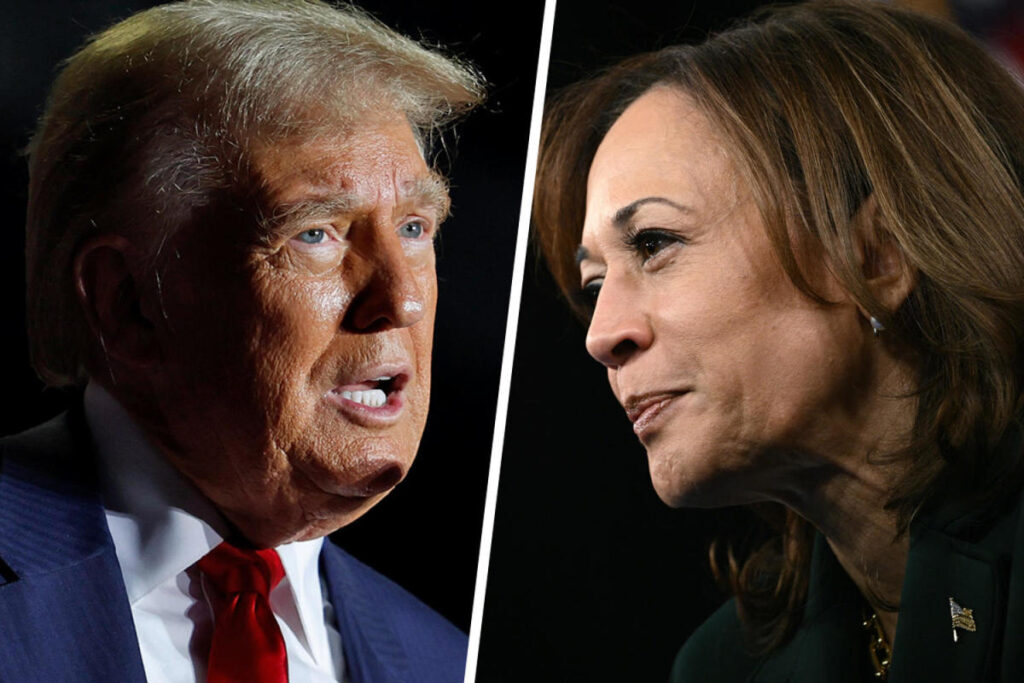A new focus group of voters who did not participate in the 2020 presidential election is shedding light on the political landscape as the upcoming election approaches. Participants revealed differing leanings toward Vice President Kamala Harris and former President Donald Trump. Many in the group view Harris favorably, valuing her commitment to protecting abortion rights and the symbolic significance of potentially electing the first female president. However, significant obstacles stand in her way. These voters expressed a grim assessment of the U.S. economy and prevalent dissatisfaction with life under President Joe Biden. Many also noted a lack of familiarity with Harris, fostering feelings of ambivalence and distrust that complicate their support.
Conversely, Trump benefits from his substantial recognition as a political figure, yet he faces his own challenges among this demographic. Some participants have reservations about his previous conduct in office, while others worry that his focus on personal rivalries could overshadow his governing responsibilities in a potential second term. Nevertheless, a majority of the group seems inclined to vote for Trump, driven primarily by economic concerns—an age-old political motivator. As one participant noted, the current inflation and job market realities are hitting close to home, reinforcing a preference for the economic stability they associate with Trump’s presidencies.
The findings from this focus group align with recent NBC News national polls indicating a preference for Trump over Harris among those who did not vote in the previous two elections. While Trump leads, these polls also reveal a concerning trend: fewer than half of the respondents claim to have a strong interest in participating in the upcoming November election. This disconnect raises critical questions about voter turnout and engagement, especially given that many of these individuals opted out of voting in 2020, a pivotal election in American history. Among those leaning toward Harris, the participants were predominantly women whose connection to her was largely emotional; they expressed hope for strong female representation in high office.
A subset of participants has undergone recent shifts in their candidate preferences, highlighting the dynamic nature of voter sentiment. One participant initially inclined toward Harris due to her emphasis on reproductive rights expressed a change of heart, citing economic struggles directly linked to the Biden administration as her primary concern. Others shared similar sentiments, indicating that while abortion rights are crucial, immediate financial worries take precedence in their voting decisions. This leaves Harris in a precarious situation as she attempts to rally support from voters who feel their immediate economic needs are being disregarded by progressive policies.
Further complicating Harris’s appeal among these voters is the perception of her leadership capabilities. Some expressed doubts about whether a female president could command the same respect and authority as a male counterpart, with implications for national security and governance. These concerns are juxtaposed with a nostalgia for the stability and relative prosperity experienced during Trump’s tenure, which influences their feelings as they consider their voting choices. While some may be leaning toward Harris due to social issues, the overarching trend favors Trump, reflecting deep-rooted economic anxieties and skepticism toward the current administration.
As these voters contemplate their potential participation in the upcoming election, questions remain about their actual turnout. While some express an increasing likelihood of voting for Trump, barriers to getting to the polls persist, including misgivings about making the “wrong” choice. This sense of trepidation is compounded by the retrospective guilt many feel for abstaining in 2020. As discussions around issues such as Project 2025 and other political dynamics continue to unfold, these participants reflect an electorate that teeters between hope and apprehension, highlighting the complexities of modern democratic engagement during an election cycle fraught with challenges.

